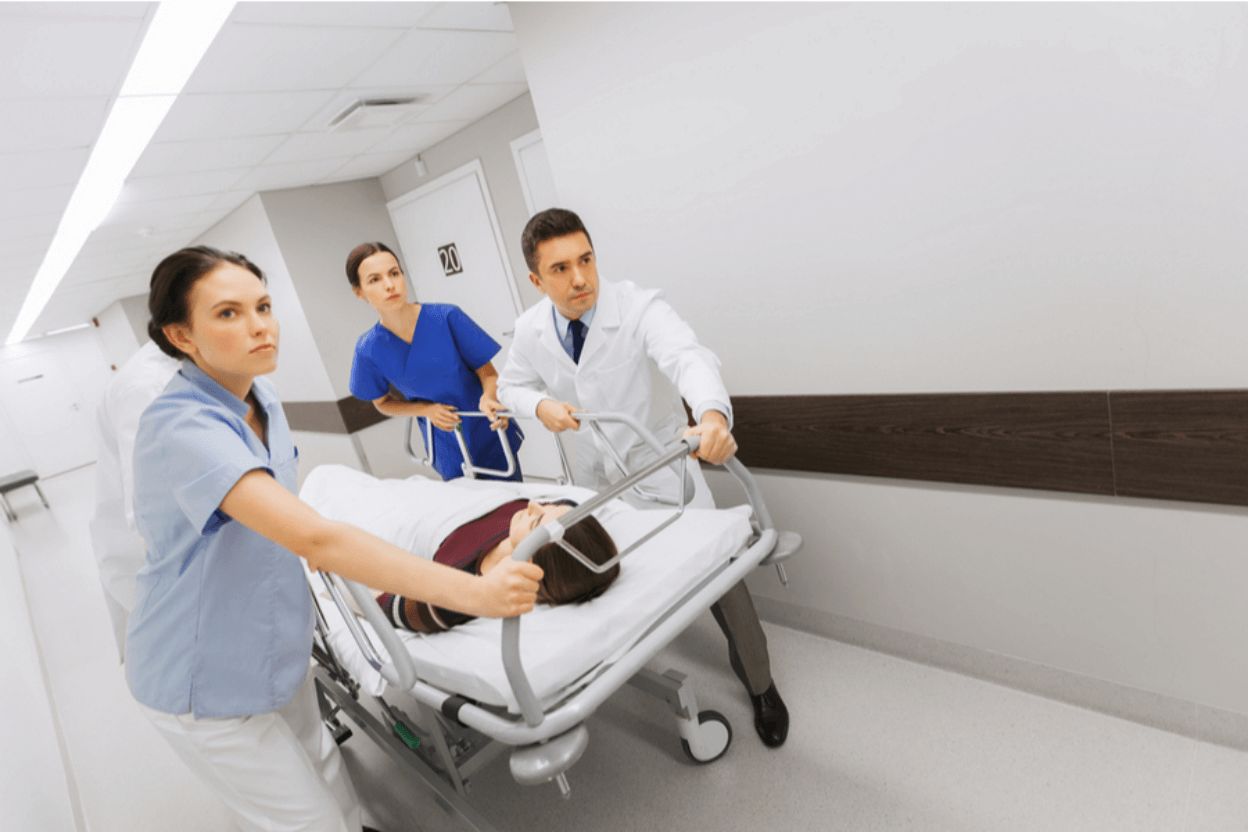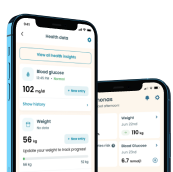Diabetic Emergency: An Overview of Its Signs and Management

People with diabetes are susceptible to several risks when they don’t properly manage their condition. Namely, diabetes can metamorphose into different conditions that make it more dangerous and life-threatening. One of the negative turns of diabetes is it becoming an emergency.
A diabetic emergency is a condition in which the health of a person with diabetes quickly deteriorates to the extent that they risk losing their life or developing permanent damages to their systems. Diabetic emergencies are usually fast and could manifest in less than 24 hours.
The major reason people experience diabetic emergencies is due to their inability to pay attention to signs and symptoms in their bodies. Many people with diabetes barely know that they suffer from the condition, with the majority taking the necessary treatment steps only when it becomes a medical emergency.
This detailed guide focuses on getting and implementing proper diabetes care during an emergency and when you should get immediate medical attention to protect your health and live more healthily.
What to Expect?
- The Facts About Diabetic Emergency
- Types of a Diabetic Emergency: What Are the Signs of a Diabetic Emergency?
- Diabetic Emergency Treatment
The Facts About Diabetic Emergency
The high number of diabetic emergencies is due to a lack of proper diagnoses and effective management tips. According to the Center for Disease Control CDC, 4.6% of the American adult population aged 20 and above have undiagnosed diabetes.
Without proper diagnoses, most people are often left to live with the condition and aren’t likely to take any preventive measures as they don’t know their status. It’s usually when their health deteriorates to a state of emergency that they get diagnosed and seek appropriate diabetes care.
Diabetes emergencies can be fatal and are the primary cause of diabetes death which is still on the high side in the US. As of 2019, diabetes was still one of the major causes of medical death, causing 87,647 deaths in the said year. It was ranked as the 7th leading cause of death in the US, accounting for 26.7 out of 100,000 deaths.
The best way to prevent the series of complications that diabetes can cause requires knowing exactly how to tell the symptoms and the steps you can take to manage them properly.
A lack of balance in blood sugar levels is the primary cause of diabetes, and diabetic emergencies are rooted in this imbalance. Without appropriate care tips, a person with low or high blood sugar levels can experience extreme blood sugar imbalance, leading to a diabetes emergency.
Types of a Diabetic Emergency: What Are the Signs of a Diabetic Emergency?
The best way to prevent a diabetes emergency is to implement great preventive tips. However, if there’s a deterioration to the extent of the condition becoming an emergency, knowing the diabetic emergency symptoms to watch out for is key to living and remaining healthy.
Knowing the symptoms isn’t enough to guarantee better diabetes care during an emergency; you should also familiarize yourself with their risk factors. This section outlines the different types of emergency diabetes and their respective symptoms to help diabetics know the appropriate steps to take.
There are four types of diabetic emergencies, including:
- Severe hypoglycemia
- Severe hyperglycemia
- Diabetic ketoacidosis
- Hyperglycemic hyperosmolar syndrome
Severe Hypoglycemia
Hypoglycemia, simply put, is the complications that arise from low blood sugar or low blood glucose.
While most of the complications with diabetes do arise from high blood sugar, people with diabetes can get low blood sugar. This happens when they consistently take too much insulin or other high blood control medications such that it affects the normal level of their blood sugar drastically.
When a person’s blood sugar levels are below 70 mg/dl, they suffer from hypoglycemia and experience insulin shock.
Hypoglycemia can lead to various complications and can be life-threatening in certain instances. The primary hypoglycemia victims are those with type 1 diabetes. However, as mentioned earlier, people with diabetes 2 are also at risk if they take medications that control blood sugar unusually.
There are different signs of hypoglycemia, and patients should know them to ensure they live healthier. An early symptom of severe hypoglycemia includes serious hunger and shakiness.
At this point, the condition is still at its earliest stage and can be quickly curbed. The issue, however, is that there may be poor diagnosis except for diabetics that generally perform regular check-ups. In severe conditions, people can experience a seizure or a diabetic coma.
The risks factors of hypoglycemia include:
- Skipping meals that should help ensure a higher level of blood sugar
- Too much exercise compared to medical recommendation
- Drinking large quantities of alcohol
- Taking more than the required level of insulin consistently
The signs and symptoms of hypoglycemia include:
- Dizziness, confusion, and nausea
- Excess hunger
- Shakiness, nervousness, irritability, and anxiety
- Sweating, clammy skin, chills, and pale skin
- Rapid beating of the heart
- Tiredness and weakness
- Tingling in the mouth area
- Headaches
- Seizures
- Loss of consciousness or coma
- Weight loss
Severe Hyperglycemia
Although high blood sugar is a common symptom of diabetes, if sugar levels consistently maintain a high range, it’s a diabetic emergency. Severe hyperglycemia is characterized by blood glucose readings greater than 125 mg/dl when you haven’t eaten for at least 8 hours.
While too much sugar is the primary cause of hyperglycemia, severe hyperglycemia isn’t necessarily triggered by carbs or a sugar-filled diet. This doesn’t mean that starchy food won’t worsen it. In fact, taking carbohydrates when you have this condition can have far-reaching effects.
The common symptoms of severe hyperglycemia include:
- Abdominal pain
- Rapid pulse
- Dry and warm skin
- Fruity smell in breath
- Excessive thirst
- Drowsiness
- Diabetic coma
Severe hyperglycemia can quickly develop into more serious diabetic conditions like diabetic ketoacidosis — an increased and life-threatening form of a diabetes emergency. Hyperglycemic hyperosmolar syndrome is another serious complication that can develop from severe hyperglycemia.
Diabetic Ketoacidosis
Diabetes ketoacidosis (DKA) is one of the more severe complications of severe hyperglycemia. It’s a diabetic emergency condition that occurs due to a lack of enough insulin that your body needs to keep high blood sugar under the safe level.
Diabetic ketoacidosis occurs when the liver produces too many ketones to lower blood sugar. Ketones are, however, harmful to the body organs and could lead to a series of conditions, including death.



While the high production of ketones causes DKA, it’s easily triggered when a person falls sick or has an infection. Some type 2 diabetes medications can also prompt it, including canagliflozin, empagliflozin, and dapagliflozin.
DKA can have immediate effects, with people collapsing in as little as 24 hours after an excessive production of ketones by their body.
There are different signs and symptoms of diabetic ketoacidosis. However, they’re usually tricky because they may look similar to other diabetic conditions, explaining why most people with a DKA emergency are typically caught unawares.
A common symptom of DKA is severe dehydration. Other apparent signs include:
- Dry mouth and lip peeling
- Dry skin or/and flushed skin
- Fruity breath and difficulty in breathing
- Abdominal pain
Anybody with a sugar level of 240 mg/dl can develop diabetes ketoacidosis, so it’s essential you continuously test for the condition if your sugar level falls in that range.
Hyperglycemic Hyperosmolar Syndrome
This condition isn’t as common as DKA because the blood sugar level barely reaches the ranges where it occurs. However, if it happens, the faster the person gets help from a medical emergency expert, the higher the chances of survival.
Hyperglycemic hyperosmolar syndrome (HHS) is a severe hyperglycemia condition in which blood sugar gets above 600 mg/dl. This condition may occur with or without DKA.
There are risk factors to having this condition, and they include:
- Infections such as urinary tract infection, pneumonia, and sepsis
- Medications and psychiatric treatments that cause dehydration
- Lack of a diabetic management plan
- Undiagnosed diabetes
- Misuse of some substances
- Having underlying health conditions, especially cardiovascular conditions such as heart attack and stroke.
The symptoms of HHS include:
- Dry mouth
- Weak or rapid pulse
- Low-grade fever, especially for adults
- Headache and vomiting, especially for kids
- Seizures and loss of consciousness
- Paralysis
Diabetic Emergency Treatment
There are medical steps and treatments that people with diabetes can take to cater to their condition. While a rule of thumb is to contact your doctor if you have any of the signs of a diabetes emergency, there are other steps that you can take to improve and better your health.
This section outlines individualized treatment steps for the various types of diabetic emergencies to help you make better decisions relating to your health.
Hypoglycemia Specific Treatment
If your condition is caused by hypoglycemia, then there are several necessary steps and lifestyle changes that you can implement to live much healthier.
For example, if the symptoms of hypoglycemia start suddenly, then taking glucose tablets and high-carb food temporarily can help improve the condition. You could also opt for more sugary drinks and candy to improve your blood sugar.
Additionally, carrying glucose gel with you or having a sugar lump once in a while are great ways to reduce the effect of hypoglycemia.
The American Diabetes Association recommends that people with hypoglycemia include the following changes and modifications to their health and lifestyle:
- Add 15 g of carbs and check their blood sugar level after 15 minutes to see if it rises to 70 mg/dl. If the level is still below 70 mg/dl, take another 15 grams of carbs and recheck your blood sugar in another 15 minutes. This measure is known as the 15-15 rule.
- After successfully increasing your blood sugar level to 70 mg/dl or a little bit above it, eat a proper meal. Incorporating fruit juice into your diet is also recommended.
- If hypoglycemia symptoms persist after following these steps, the ADA advises that patients seek medical help to get expert advice on a possible underlying condition.
Hyperglycemia Specific Treatment
Hyperglycemia is a more common cause of diabetic emergencies in people with diabetes. As such, diabetics with a general management plan are familiar with the steps taken to improve it.
One of the first steps to take is to consult your doctor and get expert advice on successfully managing the condition.
You should also get a diabetes emergency kit that helps you keep the condition under check at all times.
A diabetic emergency kit generally includes an insulin pump that helps you get enough insulin to control blood sugar rise. With an insulin pump, you can effectively manage early morning high blood sugar rise and bedtime rise as well.
An emergency kit also contains insulin doses that complement the job of an insulin pump.
If hyperglycemia is still in its mild and early stages, then the following can help:
- Moderate to intense exercising
- Eating less
- Changing insulin dose or similar medications as to when recommended by an expert
If hyperglycemia symptoms persist after taking the following steps, don’t hesitate to call a doctor.
DKA and HHS Specific Treatments
There are barely any effective home tips for DKA treatment. Hence, patients with the conditions must visit a doctor immediately for professional treatment.
If you show signs of DKA coupled with high blood sugar levels, you should purchase a test kit for the condition and test your urine. Consequently, if the results show that you have ketone levels, you should contact your doctor and instantly commence your treatment process.
The treatment for DKA is also the recommended treatment for HHS.
Conclusion
You can take several steps to treat diabetes emergencies and live healthily. The primary one is to consult a doctor and get a diabetes diagnosis. After that, you should wait for your doctor’s recommendation on the best medications to improve your health state.
You can also implement the various proven and effective tips outlined in this article to help you make a better decision that improves your overall health.Your meal choice also plays an essential role in preventing and improving a diabetic emergency. With our Klinio app, you can know the proper meals to take to improve your condition. Whether you’re suffering from severe hypoglycemia or hyperglycemia, you can successfully tailor your diet using tips from our app to fit your health demands.
Take a quiz and get your diabetes-management plan today!









